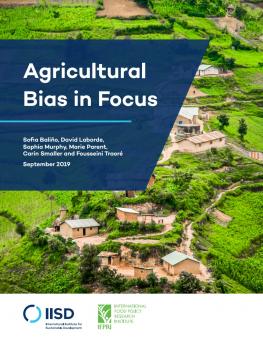
Agricultural Bias in Focus
This paper provides further details and explains how to measure and understand the source of agricultural bias in a country, including examples and country case studies.
The report Transforming Agriculture in Africa and Asia: What Are the Policy Priorities? showed that successful agricultural transformation has depended on interacting agricultural policies as well as the broader economic policy environment.
A key finding was that agricultural transformation succeeded when governments removed the policies and addressed the market failures that disadvantaged the agricultural sector relative to the rest of the economy. We referred to this relative disadvantage as the anti-agricultural bias.
To explain how these policies interact and which policies affect different aspects of the overall economy, we developed a policy taxonomy, with a focus on those that affect prices in agricultural markets (see A Policy Taxonomy for Agricultural Transformation). The policy taxonomy came from an inventory of policies collected from over 250 articles and is derived from the policy framework used in Transforming Agriculture in Africa and Asia: What Are the Policy Priorities?
This paper provides further details and explains how to measure and understand the source of agricultural bias in a country, including examples and country case studies.
You might also be interested in
CSDDD: EU's Due Diligence Law Vote Should Drive Supply Chain Sustainability Efforts
The European Parliament has voted to adopt the Corporate Sustainability Due Diligence Directive, aiming to address the environmental and social impacts of the supply chains of Europe's large corporations.
WTO Agriculture Negotiations at MC13: What does the lack of outcomes mean for least developed countries and other vulnerable economies?
IISD expert Facundo Calvo analyzes what came out of the WTO's agriculture negotiations at the 13th Ministerial Conference in Abu Dhabi and its implications for least developed countries and other vulnerable economies.
Global Market Report: Soybean prices and sustainability
Less than 3% of soybeans are produced in compliance with sustainability standards. This report unpacks what needs to change to make soybeans a food that protects rather than harms the natural environment.
At WTO meet, India will have to balance between protecting local fishers and fishing sector growth
India is likely to advocate for securing the interests of its artisanal fishers while facilitating the growth of the fishing sector at the World Trade Organisation’s 13th Ministerial Conference (MC13) in Abu Dhabi later this month.